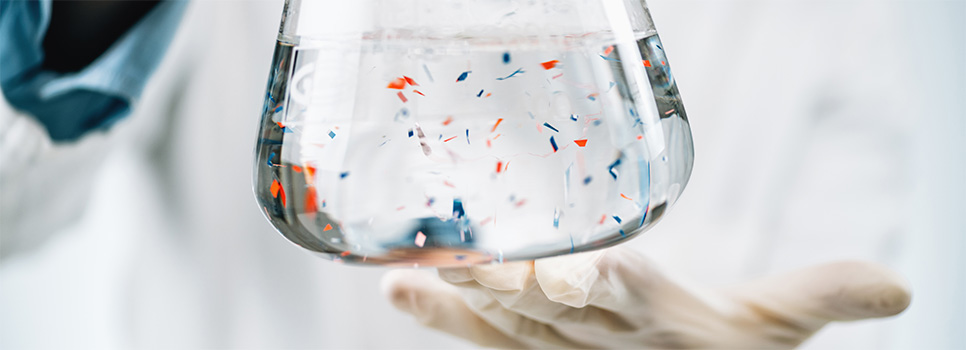MICROPLASTICS IN SEAS: THE CONTAMINATION LEVELS IN SWORDFISH AND RED TUNA MEAT IN THE MEDITERRANEAN

For the first time, microplastics, polymers, and additives have been detected in fish muscle tissue, the part that ends up on consumers' plates.
Microplastics are a serious environmental issue affecting marine ecosystems worldwide. These small particles, ranging from 0.1 to 5000 microns in size, can adsorb toxic substances from the surrounding environment, representing an additional route of exposure for marine life. Being diffused in the marine food chain, consumers may be at risk of ingesting them. And, in the Mediterranean, plastic contamination, along with additives used in their processing, is among the highest globally.
A study by the Istituto Zooprofilattico Sperimentale (IZS) of Teramo, Italy, in collaboration with the Croatian Veterinary Institute of Split and the Polytechnic University of Marche, published in Journal of Sea Research, has now revealed the level of microplastic contamination in two common Mediterranean fish species: the swordfish (Xiphias gladius), caught in the Ionian Sea, and the red tuna (Thunnus thynnus), from the Adriatic Sea. The uniqueness of this study is that the contaminants were detected, using methodologies never applied before, in fish muscles, the part that actually ends up on our plates.
"Many previous studies" - says Federica Di Giacinto, researcher at the IZS Teramo's Center for Water Biology - "focused on the content of microplastics exclusively in the digestive tract of fish. Our research was able to highlight contamination at the muscular level, not only from microplastics but also from polymers and additives used in their production. The microplastics we detected in the muscles were most likely ingested by the fish and then translocated from the gastrointestinal tract to the surrounding tissues".
By using stereomicroscopy, Raman microspectroscopy, and liquid chromatography with mass spectrometry, the study, supported financially by the National Union of Italian Cooperatives (UNCI), examined microplastics smaller than 10 microns and polymers such as polyethylene terephthalate (PET) and polycarbonate (PC), as well as pigments and additives like bisphenol A (BPA) and p-phthalic acid (PTA). Some of these substances, widely used in the production of plastic consumer goods, are being monitored to assess their health effects. This is the case with BPA, which is thought to interfere with the functionality of the endocrine system.
"This work," continues Di Giacinto, "aims to contribute to a deeper understanding of these particular categories of pollutants, both in terms of the extent of the phenomenon and by applying new methodologies for their quantification. The next steps for our laboratory will be to assess the level of contamination in further aquatic animals, ultimately leading to an evaluation of the actual exposure faced by consumers."

- Federica Di Giacinto
Di Giacinto, F., Di Renzo, L., Mascilongo, G., Notarstefano, V., Gioacchini, G., Giorgini, E., Bogdanović, T., Petričević, S., Listeš, E., Brkljača, M.,Conti, F., Profico, C., Zambuchini, B., Di Francesco, G., Giansante, C., Diletti, G., Ferri, N. and Berti., M., 2023. Detection of microplastics, polymers and additives in edible muscle of swordfish (Xiphias gladius) and bluefin tuna (Thunnus thynnus) caught in the Mediterranean Sea. Journal of Sea Research, 192, p.102359.
Istituto Zooprofilattico Sperimentale
dell'Abruzzo e del Molise "G. Caporale"
Campo Boario | 64100 TERAMO | ITALIA
Telefono 0039.0861.3321 | Fax 0039.0861.332251
e-mail: archivioeprotocollo@izs.it
Posta elettronica certificata: protocollo@pec.izs.it
Partita IVA: 00060330677
Codice Fiscale: 80006470670


